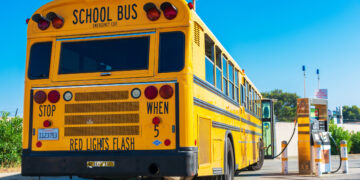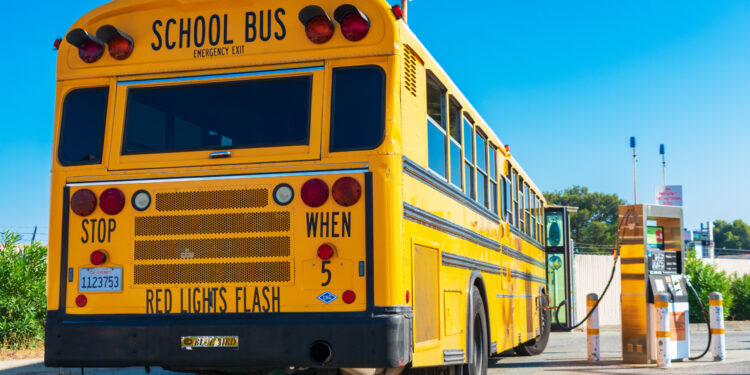Login to Continue Learning
For many of us who rode school buses as children, we remember the distinctive smell of diesel exhaust—a lingering odor that seemed more like an inconvenience than a health hazard at the time. For kids with asthma, however, the impacts were more apparent. Today, despite improvements in pollution standards, most of the half million school buses on the road are still diesel-powered and continue to emit harmful exhaust.
The toxic exhaust from these diesel-burning buses is unsafe for students, drivers, and residents in the communities they serve. This remains a significant issue for many children today. According to data from the American Lung Association, over a quarter of a million students already ride clean electric school buses daily.
Electric school buses offer a solution that reduces pollution exposure while improving kids’ health. These vehicles have no tailpipe emissions and are increasingly used across the country. To ensure more children can benefit from these clean buses, I urge federal lawmakers to preserve two critical tax incentives: the Qualified Commercial Clean Vehicle Credit (45W), which provides up to $40,000 per delivered electric school bus, and the Alternative Fuel Vehicle Refueling Property Credit (30C), which allows entities to claim a 30 percent credit for qualified property like charging infrastructure.
For over four decades, I have worked at the American Lung Association and now serve as its president. We have long known about the health impacts of vehicle emissions, particularly from diesel engines. It is time—and our responsibility—to ensure all children can breathe clean air on their way to school. According to the Lung Association’s most recent State of the Air report, 46 percent of Americans—156.1 million people—are living in areas with unhealthy levels of ozone or particle pollution. Diesel exhaust is especially dangerous for everyone, but particularly harmful to children and those with respiratory issues.
Air pollution disproportionately affects communities of color. The State of the Air report found that a person of color is more than twice as likely to live in a community with failing grades for all three measures of pollution covered in the report. These communities often have higher exposure to vehicle-based air pollution due to policies and practices that concentrate Black and brown neighborhoods near highways and other pollution sources.
The transition to zero-emission vehicles, including buses, would dramatically improve children’s health. The Lung Association estimates that such a transition could prevent 2.79 million pediatric asthma attacks and save over 500 infant lives by 2050. More communities now have the opportunity to adopt clean, tailpipe-emissions-free electric school buses thanks to federal incentives like tax credits and grant programs.
Since 2021, the number of electric school buses on the road or in transit has increased almost tenfold, with 1,500 school districts across the nation agreeing to use these buses. While there is clear demand for electric school buses, it’s only just beginning and needs continued policy support to drive the transition. It is imperative that lawmakers protect incentives like the 45W and 30C tax credits.
Our kids deserve a country where no student inhales toxic exhaust from their own bus on the way to or from school each day. With continued support from our elected officials, we can make this a reality.
📚 Reading Comprehension Quiz
According to the passage, which group was most affected by the toxic exhaust from diesel school buses during childhood?
Please login or register to take the quiz and earn points!



















